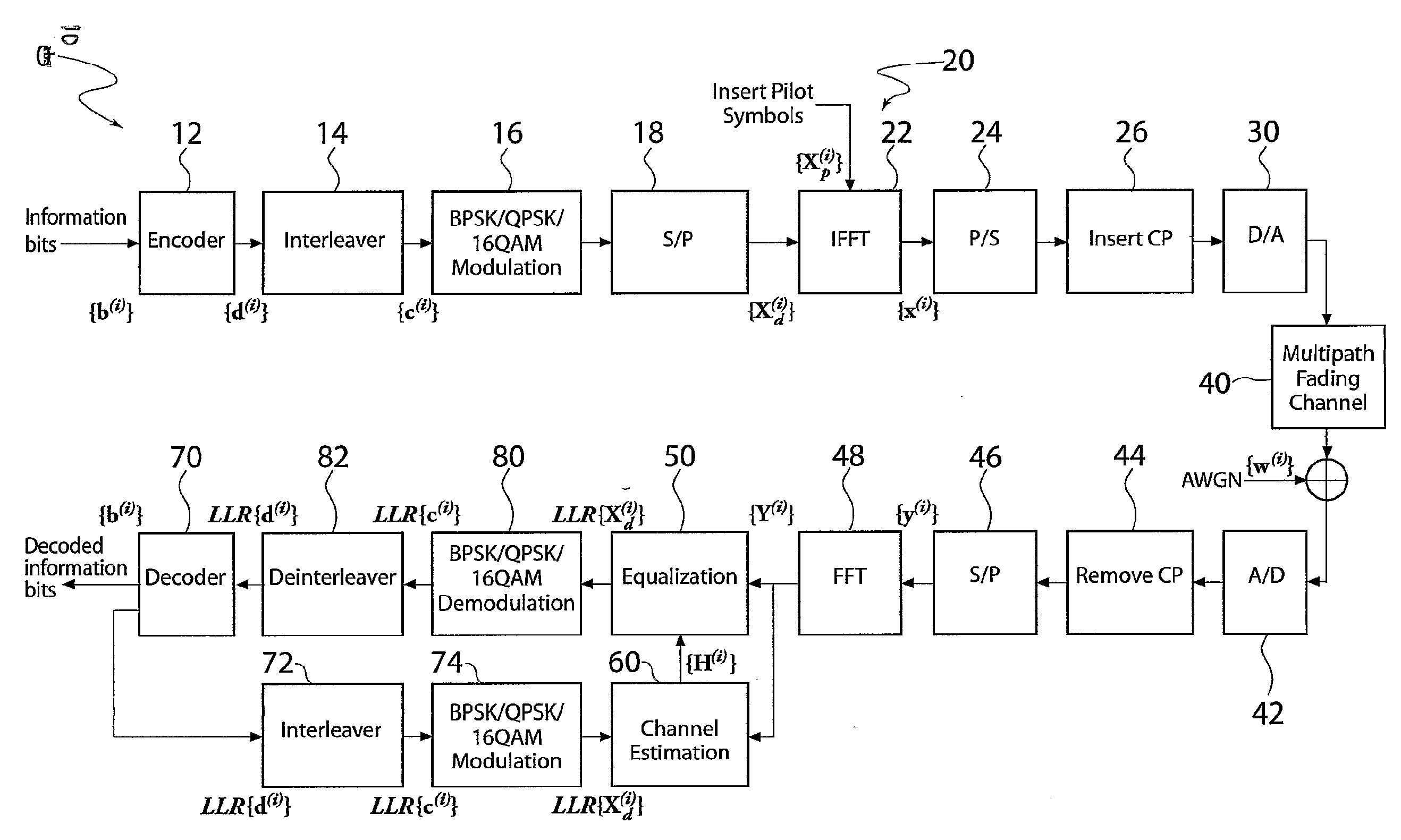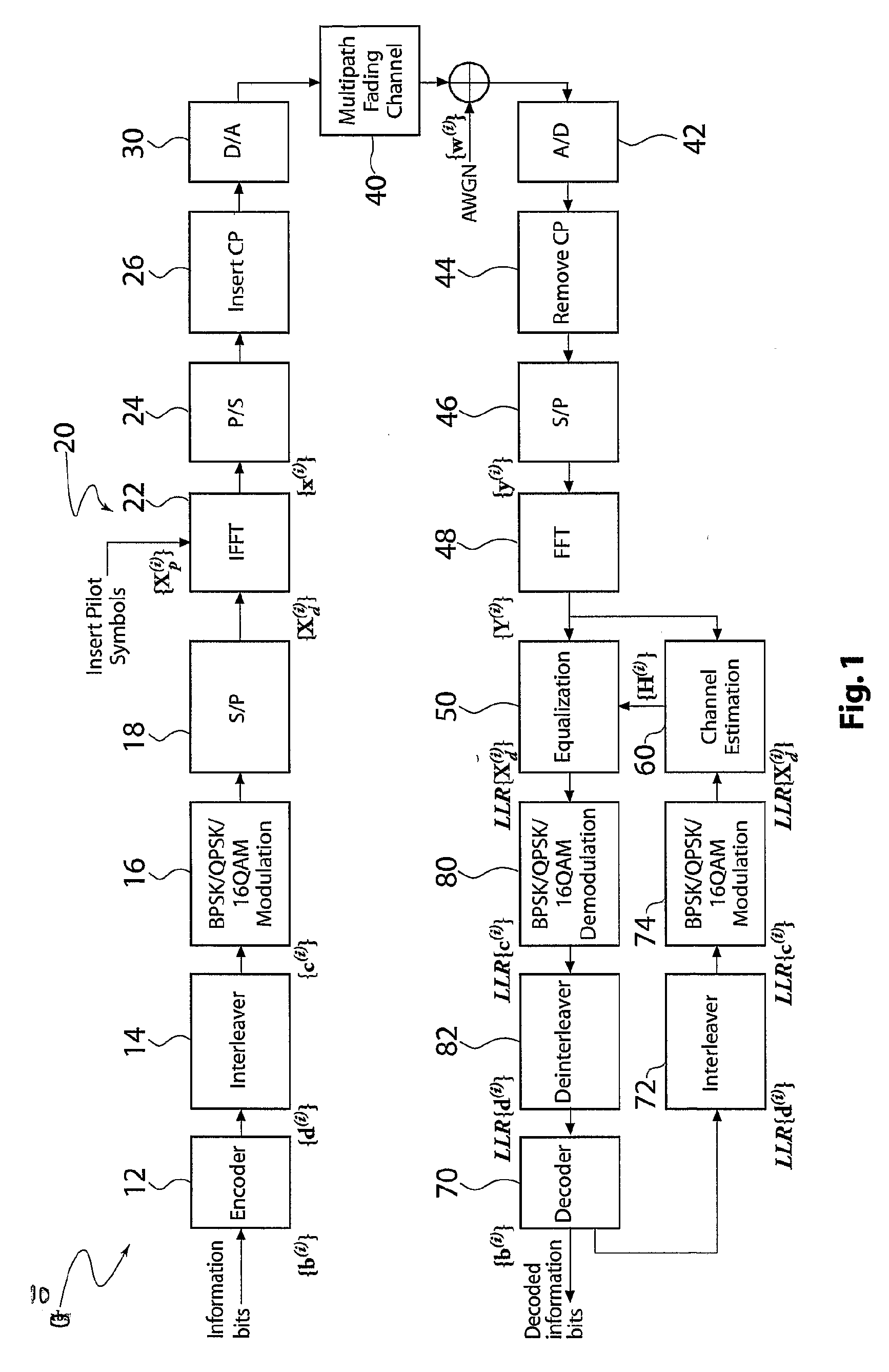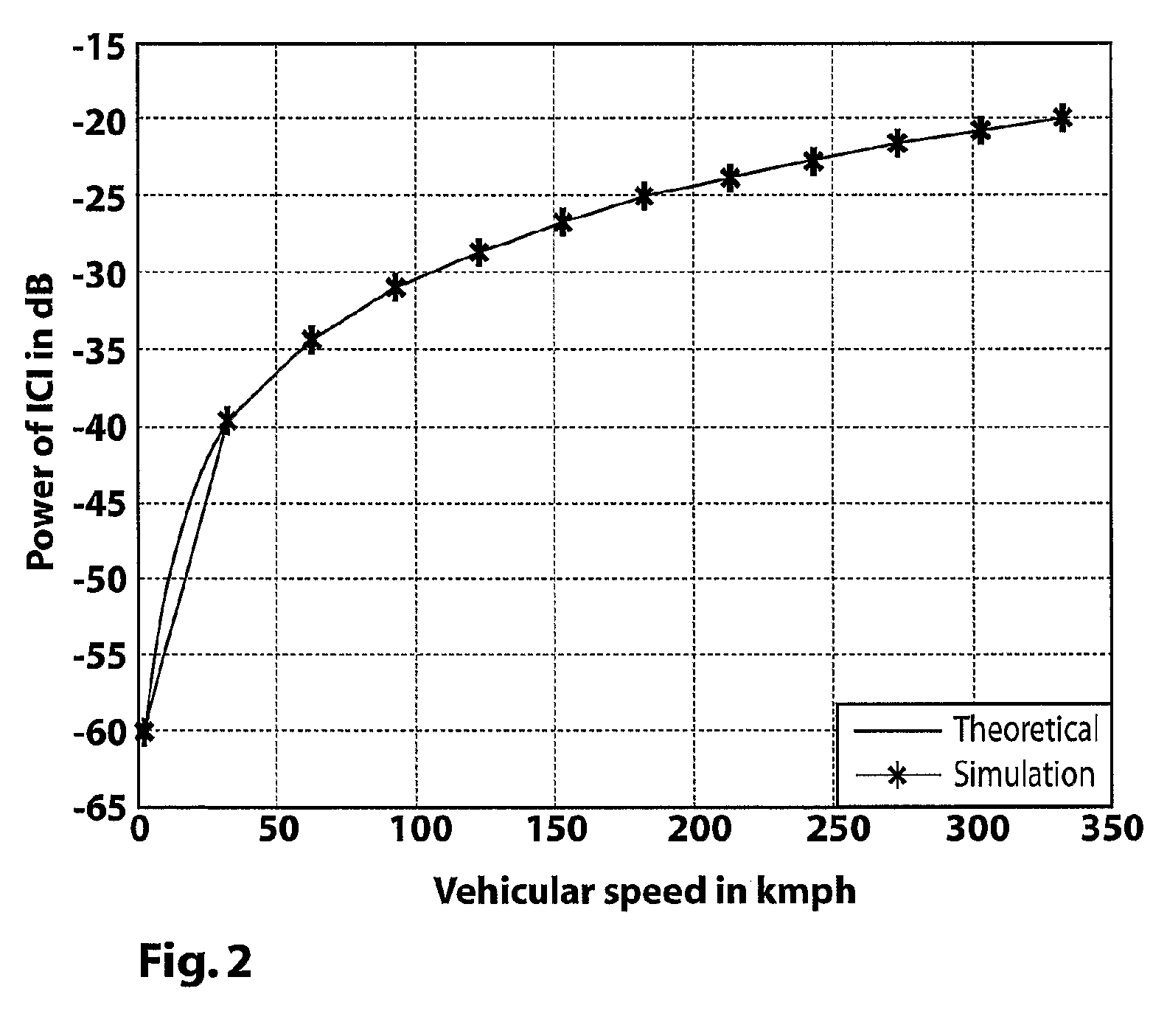Channel estimation for rapid dispersive fading channels
- Summary
- Abstract
- Description
- Claims
- Application Information
AI Technical Summary
Benefits of technology
Problems solved by technology
Method used
Image
Examples
Embodiment Construction
[0059]A block diagram of a discrete-time OFDM system 10 with N subcarriers is shown in FIG. 1. The information bits {b(i)} are first encoded 12 into coded bits sequences {d(i)}, where i is the time index. These coded bits are interleaved 14 into a new sequence of {c(i)}, mapped 16 into M-ary complex symbols and serial-to-parallel (S / P) converted 18 to a data sequence of {(X)d(i)}. Pilot sequences {(X)P(i)} are inserted 20 into data sequences {(X)d(i)} at position P(p) to form a OFDM symbol of N frequency domain signals represented as vector X(i)=[X(i)(0),X(i)(1), . . . , X(i)(N−1)]T. By applying IDFT 22 on {(X)(i)}, which is given by:
x(i)(n)=1N∑k=0N-1X(i)(k)·exp(j2πknN),(1)
where 0≦n≦N−1. After adding the CP 26 with length G, the OFDM symbol is converted into time domain sample vector x(i)=[x(i)(−G),x(i)(−G+1), . . . , x(i)(N−1)]T. These time domain samples are digital to analog converted 30 and transmitted over the multipath fading channel 40.
[0060]The multipath fading channel can b...
PUM
 Login to view more
Login to view more Abstract
Description
Claims
Application Information
 Login to view more
Login to view more - R&D Engineer
- R&D Manager
- IP Professional
- Industry Leading Data Capabilities
- Powerful AI technology
- Patent DNA Extraction
Browse by: Latest US Patents, China's latest patents, Technical Efficacy Thesaurus, Application Domain, Technology Topic.
© 2024 PatSnap. All rights reserved.Legal|Privacy policy|Modern Slavery Act Transparency Statement|Sitemap



